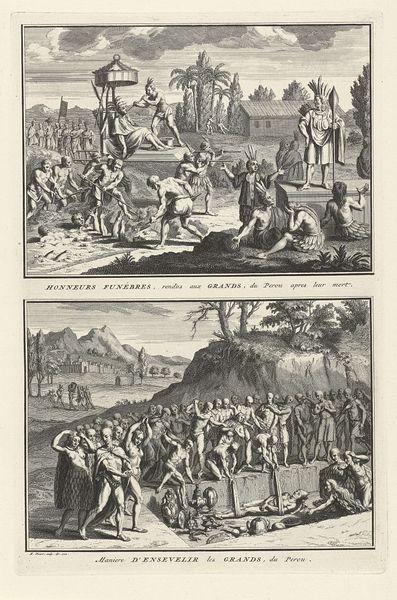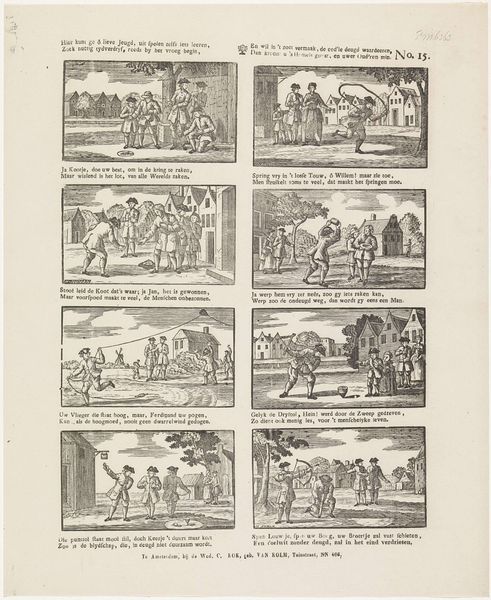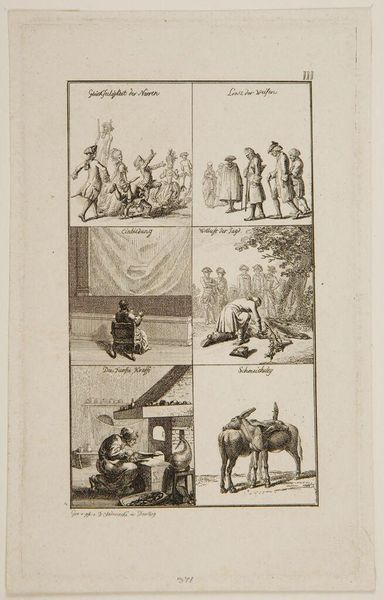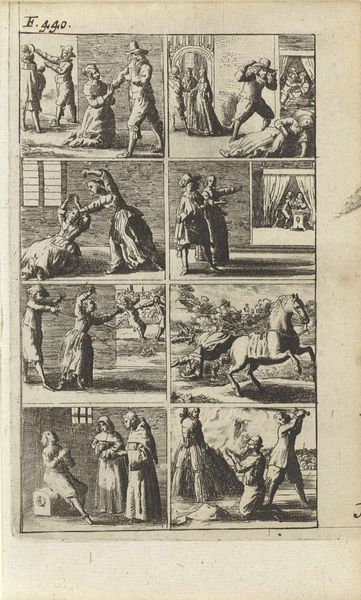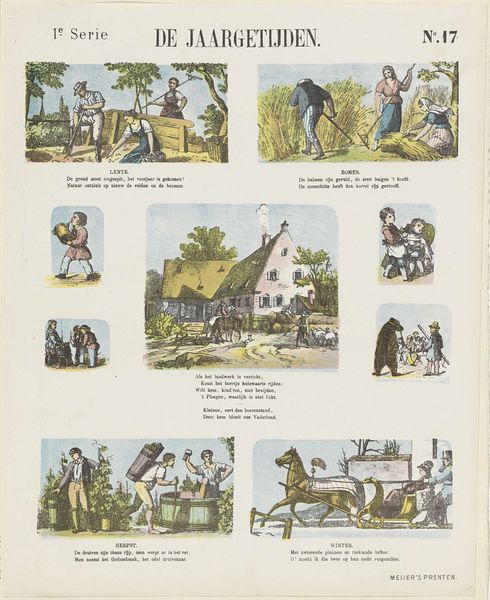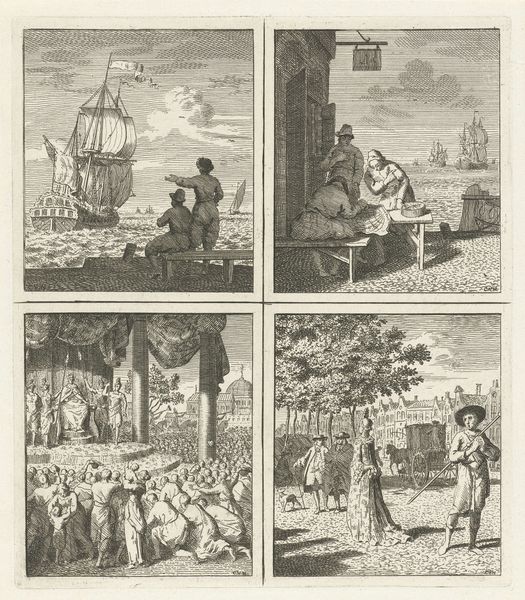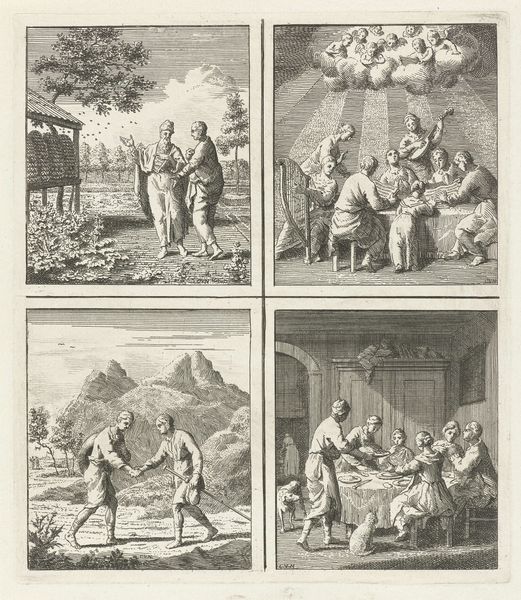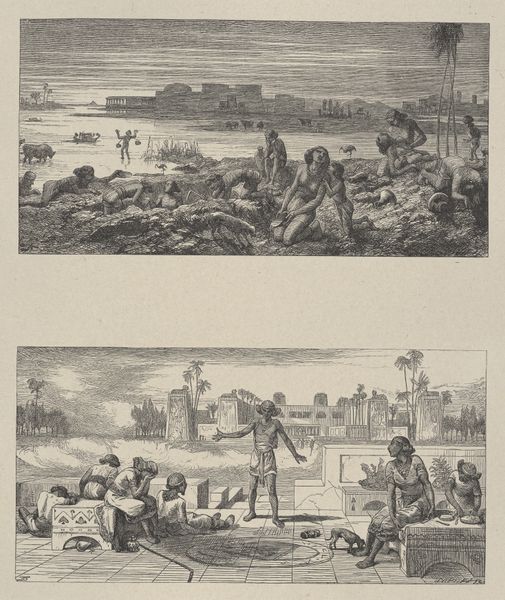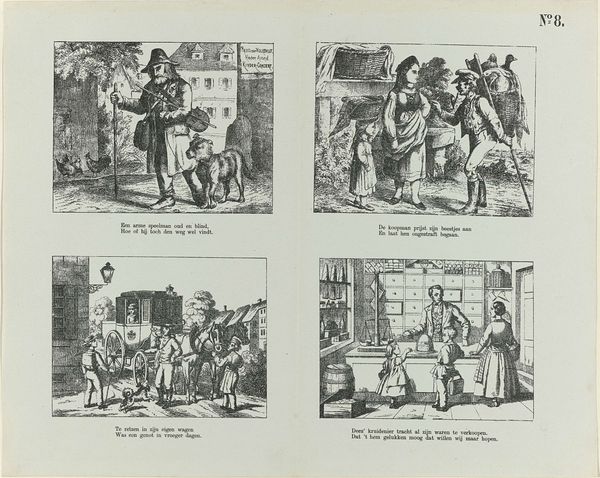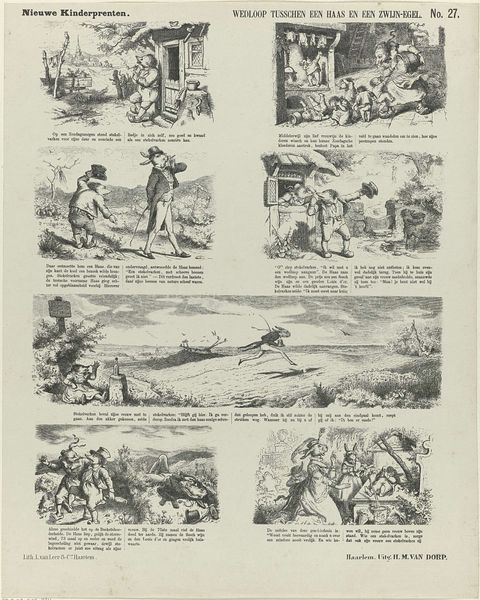
print, engraving
#
african-art
#
narrative-art
# print
#
old engraving style
#
figuration
#
line
#
genre-painting
#
history-painting
#
engraving
Dimensions: height 335 mm, width 221 mm
Copyright: Rijks Museum: Open Domain
This print, titled “Rituals of the Inhabitants of Guinea,” was made by Bernard Picart, around the turn of the 18th century. Picart was an accomplished engraver, rendering images on a copper plate with a burin to produce multiple impressions. Notice how this method lends itself to crisp linework and intricate detail. Picart never actually traveled to Guinea, and instead relied on second-hand accounts to create this depiction of West African life. As such, the image reflects European fantasies as much as it documents local practices. Prints like these played a crucial role in shaping public opinion and justifying colonial enterprises. They were commodities produced for profit, using skilled labor to package and sell a version of the world that suited the demands of European consumers. We can see how an object like this sits at the intersection of art, craft, and early capitalism.
Comments
No comments
Be the first to comment and join the conversation on the ultimate creative platform.


